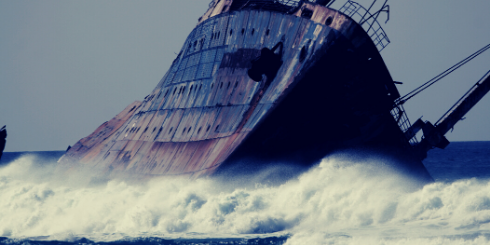Navigating the nautical nuances.
As an island country we are a nation of boating enthusiasts with approximately one million boats registered in Australia. BCF isn’t just a retailer, it’s a way of life. How these assets are financed, registered, and protected can be murky waters, however. This article discusses what can happen in a liquidation for a creditor of a company in the maritime industry in respect to:
- How a status of a claim can be determined.
- The order of the priorities that apply to claims.
- How maritime liens work and how they intersect with the Personal Property Securities Act 2009 (PPSA).
- Other considerations as provided by the Corporations Act 2001.
Maritime law involving claims against ships in Australia is determined under the Admiralty Act 1988. Under the Admiralty Act, the court may hear and determine claims for maritime liens and also 'proprietary' and 'general' maritime claims relating to ships.
Proprietary maritime claims are defined in the Admiralty Act as including:
- a claim relating to possession of a ship; title to or ownership of a ship or a share in a ship; a mortgage of a ship or a share in a ship; or a mortgage of a ship's freight;
- a claim between co-owners of a ship relating to the possession, ownership, operation or earnings of the ship;
- a claim for the satisfaction or enforcement of a court judgment (including a court of a foreign country) against a ship or other property in a proceeding in rem in the nature of a proceeding in Admiralty; or
- a claim for interest in respect of a claim referred to in points above.[1]
General maritime claims are defined in the Admiralty Act to include about 20 types of claims relating to a ship (including such things as claims for damage done by a ship or for goods or services supplied to a ship for its operation or maintenance).

Determining the status of a claim
Recently, I was appointed as liquidator of a company that included a number of vessels encumbered with mortgages and the company’s assets were subject to several other security interests.
A creditor also had claims against the vessels for pre-appointment debts relating to berthage fees.
The debts owing to the creditor were a 'general maritime claim' (section 4(3)(p) of the Admiralty Act). Importantly this did not confer on the creditor a 'proprietary claim' against the vessels (under section 17 of the Admiralty Act). The creditor’s options under the Admiralty Act, were to pursue 'in personam' proceedings against the responsible party (the company in liquidation and by extension, the liquidator) for payment of the debts or 'in rem' proceedings against the vessel. This included arresting the vessel and seeking to have the vessel sold to realise sale proceeds to pay the debts.
Order of priorities
If the creditor did arrest the vessel to be sold by judicial sale, the sale proceeds would be distributed in the general order of priority as follows (with claims within the same class ranked inter se):
- The Admiralty Marshal's costs and expenses connected with the vessel’s arrest, its appraisement, and sale.
- The arresting party’s costs , up to and including the vessel’s arrest, its appraisement, and sale.
- Maritime liens.
- Possessory liens.
- Mortgages.
- Other statutory actions in rem.
- In personam claims.
A vessel arrest would therefore not have provided the creditor in our case with any priority to be paid for their pre-liquidation debt owing; and therefore, was an unattractive option—particularly as they would need to fund the arrest and sale, in the first instance
Maritime liens
Maritime liens usually include claims for salvage, seafarers’ wages and damage done by a ship. They encumber only maritime property e.g., the ship and its rigging, its cargo and freight. As these claims are vital to maritime commerce, they have the highest priority. Maritime liens even rank ahead of registered and unregistered mortgages and statutory liens. Generally, maritime liens are payable in the inverse order of their attachment. However, they are not covered by the PPSA because they arise by operation of law. Their priority is recognised in section 73 of the PPSA and they can be enforced by an action in rem under section 15 of the Admiralty Act. When an action in rem is commenced by the maritime lien holder they become a secured creditor retrospectively from the time of the events giving rise to the cause of action.[2]
Other considerations
The Corporations Act also provides for the following:
- In a court winding up, any disposition of the company’s property made after the winding up commenced is void unless the court otherwise orders (section 468(1)).
- Any attachment, sequestration, distress or execution put in force against the company’s property after the court winding up commenced is void (section 468(4)).
- While a company is being wound-up in insolvency, a person is prevented from commencing—or proceeding—with a proceeding against the company or its property, or the enforcement of process in relation to such property—unless they have the leave of the court (section 471B).
Conclusion
Suffice to say, maritime law is a highly specialised area and seeking specialist advice is critical to navigate the issues that arise, particularly in an insolvency situation. Worrells have been assisting distressed businesses for almost 50 years. We can help steer the ship through troubled waters and plot a safe course back to harbour. Please contact your local Worrells Partner for a no-obligation discussion and appraisal of the options available.
My special thanks to Matt Hockaday of Thynne + Macartney lawyers for his assistance with this article.
[1] https://www.fedcourt.gov.au/law-and-practice/national-practice-areas/admiralty/jurisdiction
[2] http://www.austlii.edu.au/au/journals/ANZMarLawJl/2011/10.pdf. Sarah C Derrington, Professor of Admiralty Law
